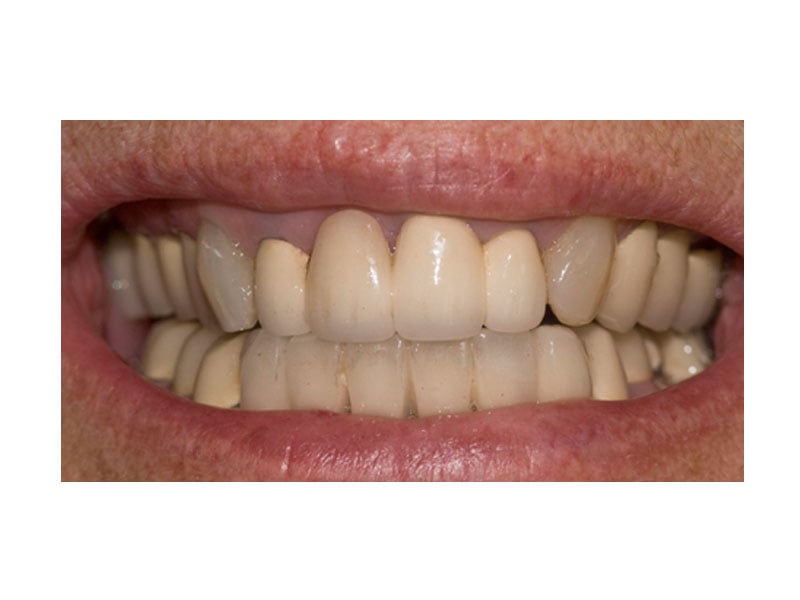The materials used in cosmetic dentistry have come a long way since the late 1920s when the first veneers (which were really more like removable acrylic tooth caps) began appearing in Hollywood. Since then, the research and advancement in porcelain, resins and bonding materials in dental restorations have allowed us to provide beautiful results to our patients that look and feel natural, and have a longer lifespan. For patients, while it’s good to do your research before you visit the dentist, the choice of material used for your dental restoration should ultimately be felt to the dentist. Every dentist is different and will choose the materials that he or she is familiar with, and is certain will be most likely to get the results you want. This blog is the third in a series about the 6 most common cosmetic dentistry mistakes.
Mistake #3 – Choosing the Wrong Restoration Materials
With so many different dental restoration materials and treatment options available to us in cosmetic and restorative dentistry, it is important for dentists to consider function and aesthetics when choosing materials. Some newer products, such as pressed ceramics, may enhance functionality with greater strength or be less prone to staining or damage, however, if the treatment calls for use in thinner dimensions, these materials can lack inherent beauty. A different material, one that is more suited to a thinner application should be considered. Patients can’t be expected to know everything or make informed choices about the most appropriate materials, so the responsibility falls on the dentist to make the right call.
Natural Doesn’t Mean Perfect
With advances in dental restoration materials and processes has come a reduction in the cost making the treatments more accessible to more patients. But patients also want their new smile to be natural-looking and not simply the perfect row of ‘Chiclets’ that many people associate with veneers. Therefore, the need for restorative materials that closely mimic a more natural look has brought even more dental restoration products onto the market. Understanding the differences in each type of porcelain helps the dentist decide which material is best for each particular patient.
Full or Partial Dental Restoration
Not all dental restorations involve a full set of veneers, or large-scale treatment resulting in a full smile makeover. In some cases the treatment may only involve repairing chips, filling in gaps or changing the shape of a single damaged or decayed tooth. Different types of porcelain or other materials will be used for a patient having minimal changes made to their teeth, as compared to a more major restoration of old, broken teeth or replacement of old restorations. Even restorations on a tooth that has undergone root canal may require a different type of porcelain than would be recommended for an intact tooth.
Making Veneers and Other Cosmetic Restorations Stick
If the wide array of porcelain and resin materials used in cosmetic dental restorations is not enough, there are many types of cement, the bonding agent used to permanently adhere to the restoration to the tooth. The bonding material used is also dependent on many factors including the type of porcelain used and the aesthetic results trying to be achieved. In addition, the condition of gum tissue needs to be considered, and the amount of preparation that needs to be done to the tooth in advance of the procedure.
Many factors impact the choice selection of the restoration material and the cement that holds restorations in place. It is the cosmetic dentist’s responsibility to stay up-to-date and knowledgeable about all of the options and advances in cosmetic dentistry and it’s patient’s responsibility to find a qualified dentist who can be trusted to make the best choices for your particular situation.
This post is the third in our six-part series about common cosmetic dentistry mistakes which can include microleakage causing discolouration of veneers, and an unnatural look due to improper smile design. Watch for more blogs in this series and if you are considering a smile makeover or cosmetic dentistry in Oakville contact Oakville Dentist, Dr. Agatha Bis and her team by calling 905.338.6684 or by completing the form below. We are here to answer your questions about cosmetic dentistry treatments and improving your smile.

